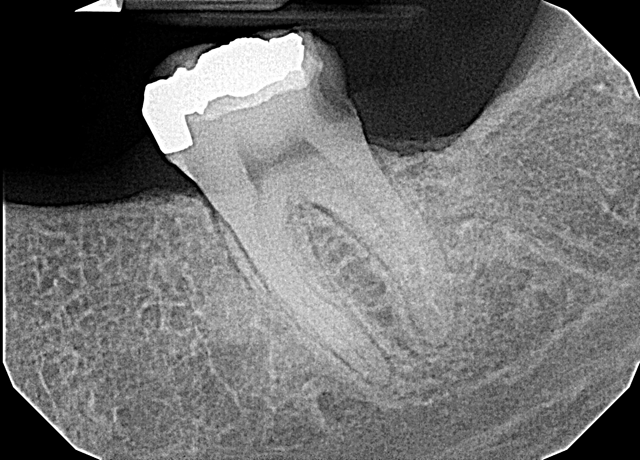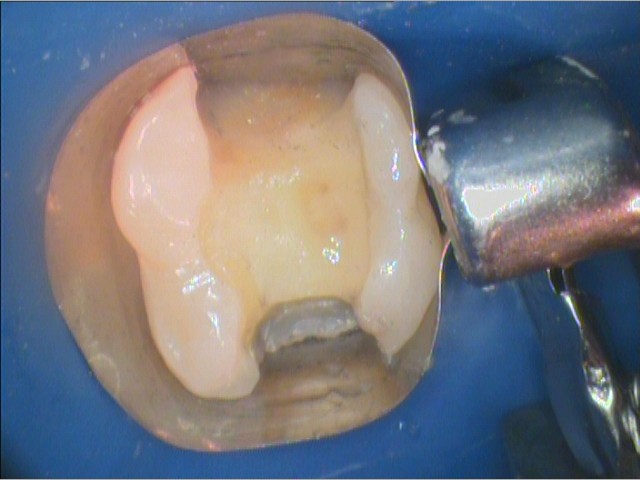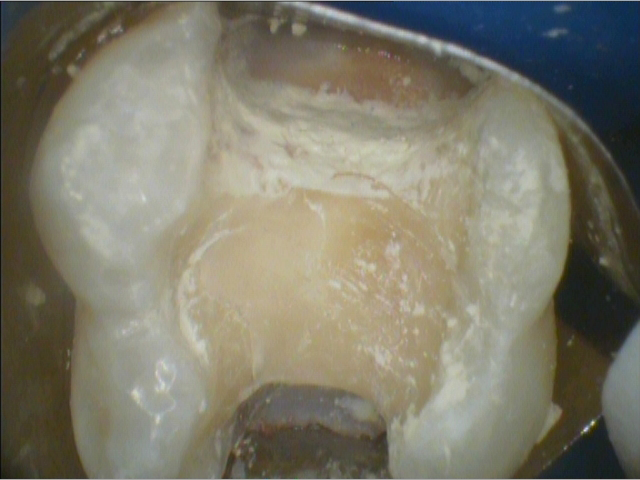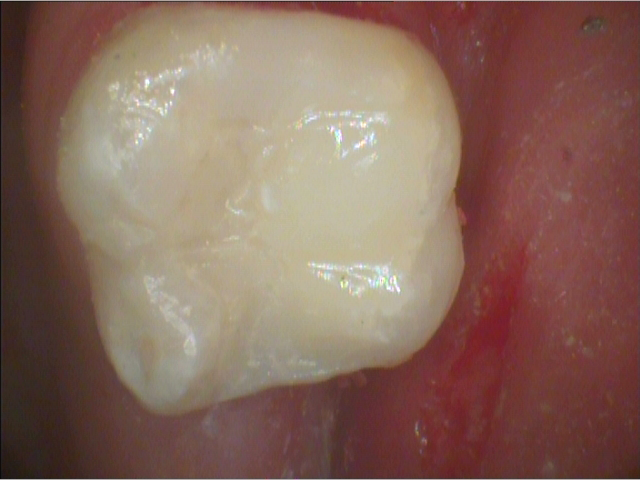How to use Biodentine for direct and indirect pulp caps
Why Catapult Education reviewers enjoyed using this bioactive dentin substitute from Septodont.

A much more conservative approach is taking root in dentistry as technology and materials allow providers to save teeth and tissue. When faced with deep carious lesions and root lesions, we as clinicians should be changing our focus from endodontic treatment, post and cores, and deep-cut full coverage restorations to, if possible, achieving pulpal health and restoring more conservatively.
Catapult Education reviewers evaluated Biodentine® made from the patented ABS technology. Active biosilicate, Septodont’s bioactive material, was primarily reviewed for its use in direct pulp caps and indirect pulp caps. Additional uses include repairing root perforations, pulpotomies, root resorption and deep caries bases. Catapult reviewers overwhelmingly reported positive feedback with Biodentine. Eighty-five percent said they would recommend Biodentine to a colleague.
When dentin has been compromised, whether from decay, resorption or mechanical perforation, previous restorative options have been limited. Calcium hydroxide bases have long been used to stimulate dentin formation but their weak physical properties have been a drawback. Only 60 percent of our evaluators reported using Dycal or MTA. This begs the question of how teeth with deep carious lesions and root lesions are being treated. Are we opting for more aggressive procedures in lieu of pulp caps, root repairs or other resorption repairs? Endodontic treatment followed by posts, cores and crowns is an aggressive treatment option that can result in destruction of significant tooth structure. We find many endontically treated and crowned teeth are eventually lost and replaced with implants or other restorative means.
Biodentine by Septodont, a calcium silicate restorative dentin substitute, maintains pulpal vitality and stimulates formation of tertiary dentin. It can be used both on the crown portion of the tooth and on the roots. With its physical properties, compressive strength, elasticity and hardness, similarity to dentin, and reparative stimulation from calcium hydroxide ion release, Biodentine is an excellent choice for direct pulp capping, indirect pulp capping, pulpotomies, furcation repair and resorption repair. Biodentine’s bioactivity is what makes it a superior clinical choice over calcium hydroxide bases and glass ionomers.
Case: Indirect pulp cap on deep carious lesion
The patient is 26-year-old female with several missing teeth and gross decay of several others. She has neglected her dental care due to limited access and financial duress. The lower right second molar had previously been restored with amalgam. The amalgam had partially fractured out and there was a deep carious lesion with close proximity to the pulp (Fig. 1). The tooth was asymptomatic. The pulp tested vital with traditional pulp testing. Because of the deep decay and proximity to the pulp, I previously would have considered endodontically treating this tooth and then restoring with a passive post and core followed with a full coverage crown.


Fig. 1 Fig. 2
The patient was anesthetized with an inferior alveolar block with 4% Septocaine(1:100,000epi). Isolation was obtained with a rubber dam. The remaining amalgam restoration was removed with a high-speed carbide bur. The deep distal caries were excavated completely with a #6 round carbide bur with low torque. A very thin layer of dentin was left remaining over the pulp (Fig. 2). A traditional matrix band was placed. Biodentine was prepared, triturated and placed in a layer over the thin dentin (Fig. 3). The Biodentine was allowed to set for its 12-minute set time.The preparation was then refined and cleaned.


Fig. 3 Fig. 4
Next, 37% phosphoric acid was applied for 15 seconds as a total etch on the enamel, dentin and Biodentine. The etchant was then rinsed off. Adhesive was applied, air thinned and cured. A low stress bulk fill flowable was placed and topped with a universal composite resin then finished and polished (Fig. 4). Thus, this tooth has been restored and the pulp has been left intact and vital. The Biodentine layer, acting as a indirect pulp cap and dentin replacement, will presumably stimulate tertiary dentin formation and keep this pulp healthy. Considerable tooth structure has been saved and the long-term prognosis much improved. This makes me feel like a dental hero, saving this young patient’s tooth from endodontic and crown treatment.
For use, the liquid component is added to the capsule. The capsule is then triturated for 30 seconds. The material, a malleable paste, is applied to the tooth with the supplied disposable small spatula. The set time is 12 minutes. Some evaluators cited the mixing and handling as challenging. The set time may seem little time-consuming by today’s instantaneous standards, but the biostimulating activity with the associated clinical benefits of dentin stimulation and maintenance of pulpal vitality warrant the clinical time.
Overall, Catapult evaluators reported a short-term success rate of 95 percent with direct and indirect pulp caps. Pulpal health is maintained and reparative dentin is stimulated. More conservative restorations can be placed and more natural tooth structure can be maintained. Biodentine earns the ‘Catapult Vote of Confidence.’
ACTIVA BioACTIVE Bulk Flow Marks Pulpdent’s First Major Product Release in 4 Years
December 12th 2024Next-generation bulk-fill dental restorative raises the standard of care for bulk-fill procedures by providing natural remineralization support, while also overcoming current bulk-fill limitations.